Growing Potatoes in Containers: Unlock the secrets to a bountiful harvest, even without a sprawling garden! Have you ever dreamt of plucking fresh, earthy potatoes straight from your own backyard (or balcony!)? Well, dream no more! This DIY guide will empower you to cultivate delicious potatoes in containers, regardless of your space constraints.
The humble potato, a staple in diets worldwide, boasts a rich history. Originating in the Andes Mountains of South America, potatoes were cultivated by the Incas centuries ago. Today, they’re a symbol of resourcefulness and sustenance. But let’s face it, not everyone has the land to dedicate to traditional potato farming. That’s where container gardening comes in!
I know what you’re thinking: “Potatoes in pots? Is that even possible?” Absolutely! Growing Potatoes in Containers is not only possible, but it’s also incredibly rewarding. Imagine the satisfaction of harvesting your own homegrown potatoes, knowing exactly where they came from and how they were grown. Plus, it’s a fantastic way to save money on groceries and enjoy the freshest, most flavorful potatoes imaginable. This DIY trick is perfect for apartment dwellers, urban gardeners, or anyone looking to maximize their growing space. Let’s dive in and discover how easy it is to become a container potato pro!
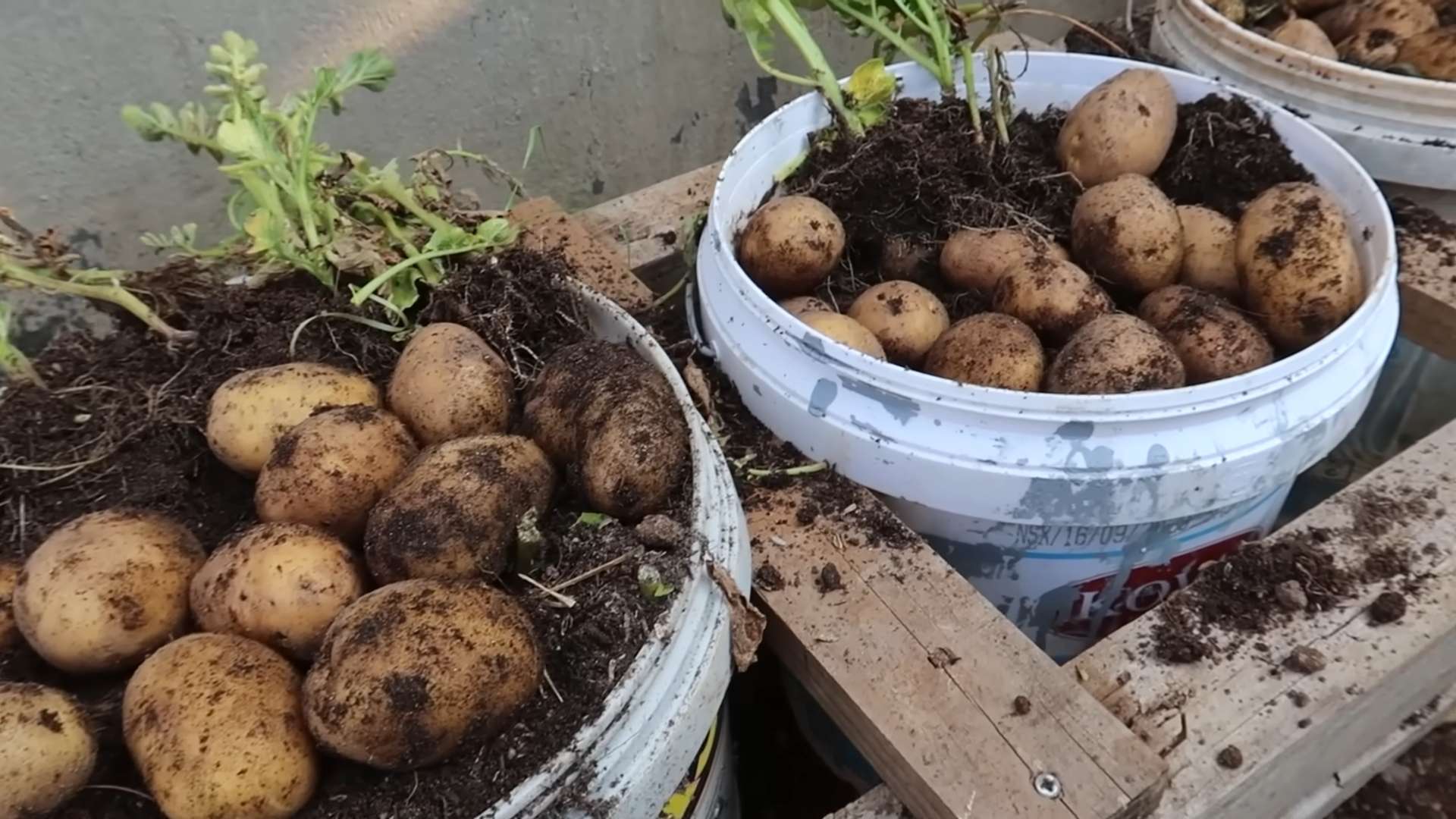
Growing Potatoes in a Pot: Your DIY Guide for a Bountiful Harvest in a Small Space
Hey garden friends! Do you fancy fresh, homegrown potatoes but don’t have a huge garden? No problem! I’ll show you how you can easily grow potatoes in pots or containers. It’s super easy and a lot of fun! And the best part: you don’t need much space for it. Let’s get started!
What you need: The Materials List
Before we begin, here is a list of everything you’ll need for your potato pot project:
- Large pots or containers: Choose pots with a diameter of at least 40 cm and a depth of 40 cm. The bigger, the better! Remember that potatoes need space to grow.
- Seed potatoes: Buy certified seed potatoes from a garden center or online. Make sure to choose varieties that are suitable for growing in pots. Early potatoes are often a good choice.
- High-quality potting soil: Use a loose, well-draining potting soil. You can also mix in compost to improve the nutrient supply.
- Compost or organic fertilizer: Potatoes are hungry! Compost or organic fertilizer provides them with the necessary nutrients.
- Drainage material: Expanded clay, gravel, or clay shards at the bottom of the pot ensure good drainage and prevent waterlogging.
- Watering can or hose: For regularly watering your potato plants.
- Patience and love: The most important thing!
Step-by-Step Guide: How to Plant Your Potatoes in a Pot
Now let’s get down to it! Follow these steps to successfully grow your potatoes in a pot:
1. Preparation of the Seed Potatoes:
- About 2-3 weeks before planting, you should let the seed potatoes sprout (chit). To do this, place them in a bright, cool place (approx. 10-15°C).
- You can also place the potatoes in egg cartons so they don’t lie on top of each other.
- The potatoes will then form small, green shoots (eyes). These shoots are important for the growth of the plant.
- If the potatoes are very large, you can cut them in half or quarters before planting. Make sure each piece has at least one or two eyes. Let the cut surfaces dry well before planting to prevent rot.
2. Preparation of the Pot:
- Clean the pot thoroughly if it has been used before.
- Fill a layer of drainage material (expanded clay, gravel, or clay shards) at the bottom of the pot. This ensures good drainage and prevents waterlogging.
- Fill the pot with a layer of potting soil, about 10-15 cm high.
- Mix some compost or organic fertilizer into the soil.
3. Planting the Potatoes:
- Place the pre-sprouted seed potatoes on the soil with the shoots facing up.
- Make sure there is enough space between the potatoes (approx. 20-30 cm).
- Cover the potatoes with another layer of soil, about 10 cm high.
- Water the soil gently.
4. Caring for the Potato Plants:
- Place the pot in a sunny location. Potatoes need at least 6 hours of sun per day.
- Water the plants regularly, especially during the growth phase. The soil should always be slightly moist, but not wet. Avoid waterlogging.
- Fertilize the plants every 2-3 weeks with compost or organic fertilizer.
- When the plants are about 20-30 cm high, start hilling them up.
5. Hilling: The Key to a Bountiful Harvest
- Hilling (or earthing up) is an important step in potato cultivation. It involves mounding soil around the stems of the plants.
- Fill the pot with soil so that only the top leaves are showing.
- Repeat the hilling process as soon as the plants have grown a bit more.
- Hilling encourages the plant stems to form more potatoes. It also protects the potatoes from sunlight, which turns them green. Green potatoes contain solanine, which is toxic.
6. Protection from Pests and Diseases:
- Regularly check the plants for pests like potato beetles or aphids.
- Remove pests by hand or use organic pesticides.
- Watch for signs of diseases like late blight.
- Remove affected leaves or plants immediately to prevent the spread of the disease.
7. Harvest Time: The Reward for Your Effort
Store the potatoes in a cool, dark, and dry place.
The harvest time depends on the potato variety. Early potatoes can often be harvested after just 8-10 weeks. Late potatoes take longer.
You can tell the potatoes are ripe when the leaves of the plants turn yellow and die back.
Stop watering a few days before the harvest.
Carefully tip the pot over and collect the potatoes.
Or, carefully dig into the soil with a small trowel to find the potatoes.
Let the potatoes dry briefly after harvesting before you store them.
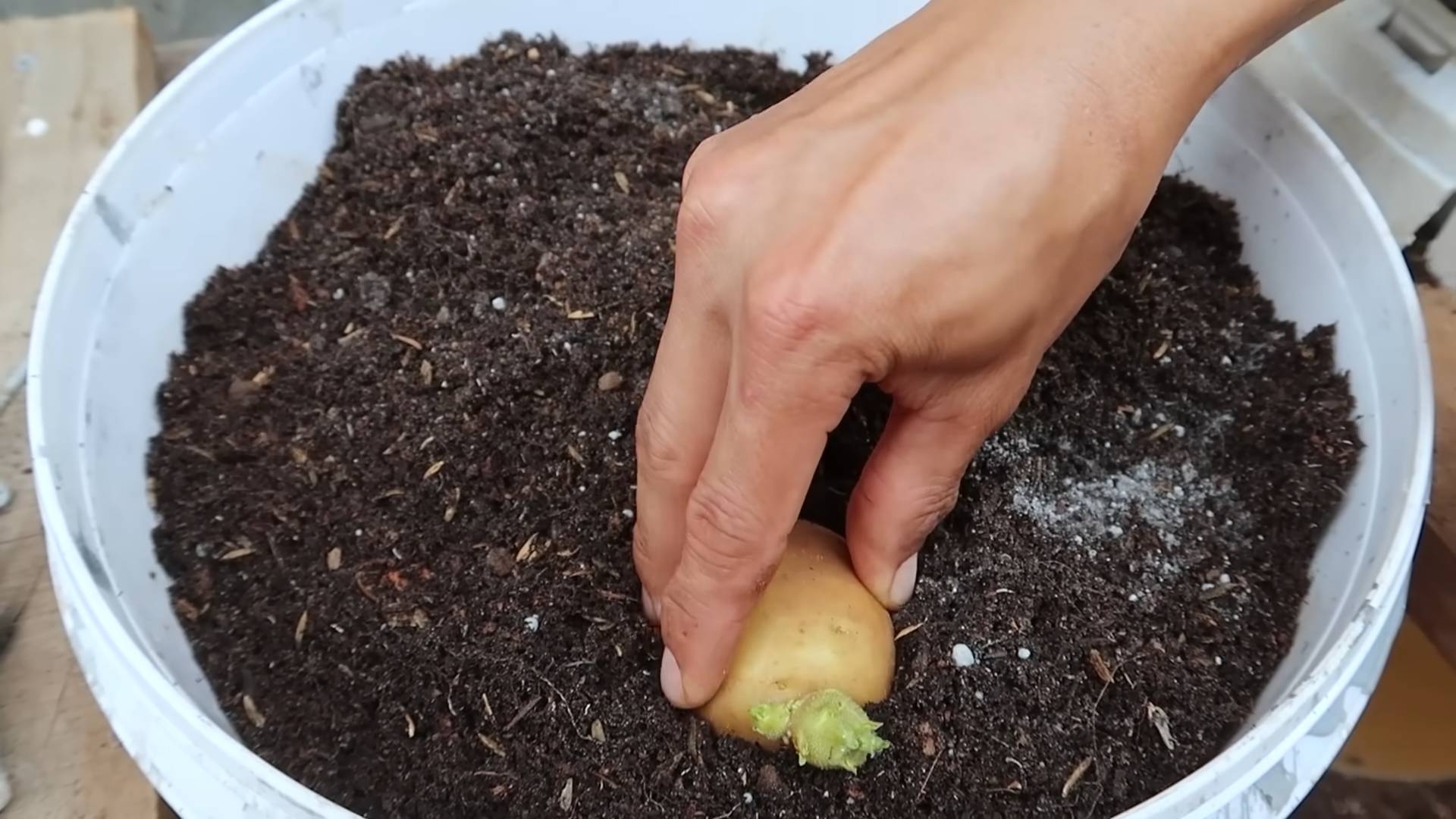
Conclusion
So, there you have it! Growing potatoes in containers is not just a gardening trend; it’s a game-changer for anyone, regardless of space or experience. We’ve walked through the simple steps, highlighted the benefits, and armed you with the knowledge to cultivate your own potato bounty. But why is this DIY trick a must-try?
Firstly, the sheer convenience is undeniable. No sprawling garden? No problem! A sunny balcony, patio, or even a well-lit deck can become your personal potato patch. This accessibility opens up the world of homegrown produce to apartment dwellers and those with limited outdoor space. Imagine the satisfaction of harvesting fresh, flavorful potatoes just steps from your kitchen.
Secondly, container gardening offers unparalleled control. You dictate the soil composition, ensuring optimal drainage and nutrient levels. You can easily monitor and manage pests and diseases, minimizing the risk of crop failure. This level of control translates to healthier plants and a more abundant harvest.
Thirdly, the educational aspect is invaluable. Growing potatoes in containers is a fantastic way to learn about plant life cycles, soil science, and the rewards of nurturing your own food. It’s a hands-on experience that connects you to the natural world and fosters a deeper appreciation for the food on your table. It’s also a great project to do with kids, teaching them valuable lessons about sustainability and where their food comes from.
But the benefits don’t stop there. Consider the variations you can explore. Experiment with different potato varieties, from the classic Russet to the colorful Yukon Gold or the petite fingerling. Try adding companion plants like marigolds or basil to deter pests and enhance flavor. You can even create a tiered container garden for a visually stunning and space-saving display.
Think about using different types of containers. While we’ve focused on fabric pots, you can also use plastic tubs, wooden crates, or even repurposed containers like old tires (though be mindful of potential leaching). Each material offers unique advantages and disadvantages in terms of drainage, insulation, and aesthetics.
And speaking of aesthetics, don’t underestimate the decorative potential of your potato containers. Paint them in vibrant colors, add stencils, or adorn them with mosaic tiles to create a personalized touch. Your potato garden can be both productive and beautiful.
The key takeaway is that growing potatoes in containers is an accessible, controllable, and educational experience that yields delicious results. It’s a rewarding project that connects you to the natural world and empowers you to grow your own food, even in the most urban environments.
So, what are you waiting for? Grab a container, some seed potatoes, and get your hands dirty! We encourage you to try this DIY trick and experience the joy of harvesting your own homegrown potatoes. And most importantly, share your experience with us! Tell us about your successes, your challenges, and your favorite potato recipes. Let’s build a community of container potato growers and inspire others to embrace the joys of homegrown food. Share your photos and stories on social media using #ContainerPotatoes and let’s celebrate the bounty of our urban gardens! We are confident that you will find that **growing potatoes in containers** is a rewarding and delicious experience.
Frequently Asked Questions (FAQ)
What is the best time of year to start growing potatoes in containers?
The ideal time to start growing potatoes in containers is in early spring, about 2-3 weeks before the last expected frost. This allows the plants to establish themselves before the warmer weather arrives. However, you can also plant a second crop in late summer for a fall harvest, especially in regions with mild winters. The key is to avoid planting during periods of extreme heat or cold. Check your local climate data for the average last frost date and adjust your planting schedule accordingly. Remember that potatoes prefer cooler temperatures for optimal tuber development.
What size container is best for growing potatoes?
A container that is at least 15-20 gallons in size is recommended for growing potatoes. This provides enough space for the roots to develop and for the tubers to form. The container should also be at least 12 inches deep. Fabric pots are a popular choice because they allow for good drainage and aeration. However, you can also use plastic tubs, wooden crates, or even repurposed containers like old tires (though be mindful of potential leaching). The larger the container, the more potatoes you can potentially harvest.
What type of soil should I use for growing potatoes in containers?
Potatoes need well-draining soil that is rich in organic matter. A good mix would be equal parts of potting soil, compost, and peat moss or coco coir. Avoid using garden soil, as it can be too heavy and may not drain well in a container. You can also add some slow-release fertilizer to the soil to provide the plants with essential nutrients. The pH of the soil should be slightly acidic, around 6.0-6.5.
How often should I water my potato plants in containers?
Water your potato plants regularly, especially during hot and dry weather. The soil should be kept consistently moist, but not waterlogged. Check the soil moisture by sticking your finger about an inch into the soil. If it feels dry, it’s time to water. Overwatering can lead to root rot, so be sure that your container has good drainage. During periods of heavy rain, you may need to reduce watering frequency.
How much sunlight do potatoes need?
Potatoes need at least 6-8 hours of sunlight per day to thrive. Choose a location that receives plenty of direct sunlight. If you live in a very hot climate, you may need to provide some afternoon shade to prevent the plants from overheating. Insufficient sunlight can result in smaller tubers and a reduced harvest.
How do I “hill” potatoes in containers?
“Hilling” is the process of adding more soil to the container as the potato plants grow. This encourages the plants to produce more tubers along the buried stem. When the plants are about 6 inches tall, add a few inches of soil to the container, covering the lower part of the stem. Repeat this process every few weeks as the plants grow, until the container is almost full.
What are some common pests and diseases that affect potatoes?
Some common pests that affect potatoes include aphids, potato beetles, and flea beetles. Diseases include early blight, late blight, and potato scab. Monitor your plants regularly for signs of pests or diseases. You can use organic pest control methods, such as insecticidal soap or neem oil, to control pests. To prevent diseases, ensure good air circulation and avoid overwatering. Choose disease-resistant potato varieties whenever possible.
How do I know when my potatoes are ready to harvest?
Potatoes are typically ready to harvest about 70-90 days after planting. The foliage will start to turn yellow and die back. You can harvest “new potatoes” earlier, about 2-3 weeks after flowering, by carefully digging around the edges of the container and removing a few small potatoes. For a full harvest, wait until the foliage has completely died back. Then, carefully dump the container and harvest the potatoes.
Can I reuse the soil from my potato containers?
Yes, you can reuse the soil from your potato containers, but it’s important to amend it with fresh compost and fertilizer before planting again. Potatoes are heavy feeders, so the soil may be depleted of nutrients after a harvest. You should also check the soil for any signs of pests or diseases and treat it accordingly. Consider rotating crops in your containers to prevent soilborne diseases from building up.
What are some good potato varieties to grow in containers?
Some good potato varieties to grow in containers include Yukon Gold, Red Pontiac, fingerling potatoes (such as Russian Banana), and Kennebec. These varieties are relatively compact and produce well in containers. Choose varieties that are suited to your local climate and growing conditions. Experiment with different varieties to find your favorites.

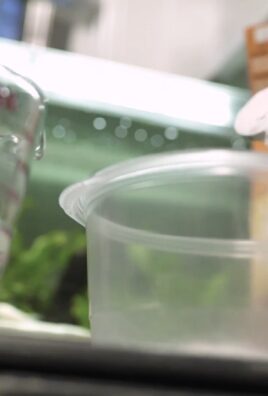
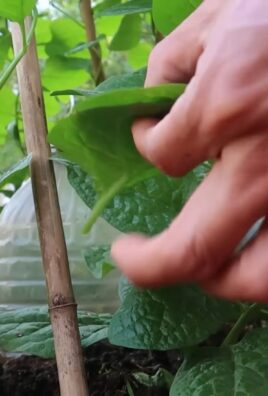
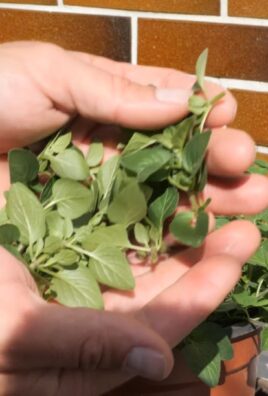
Leave a Comment